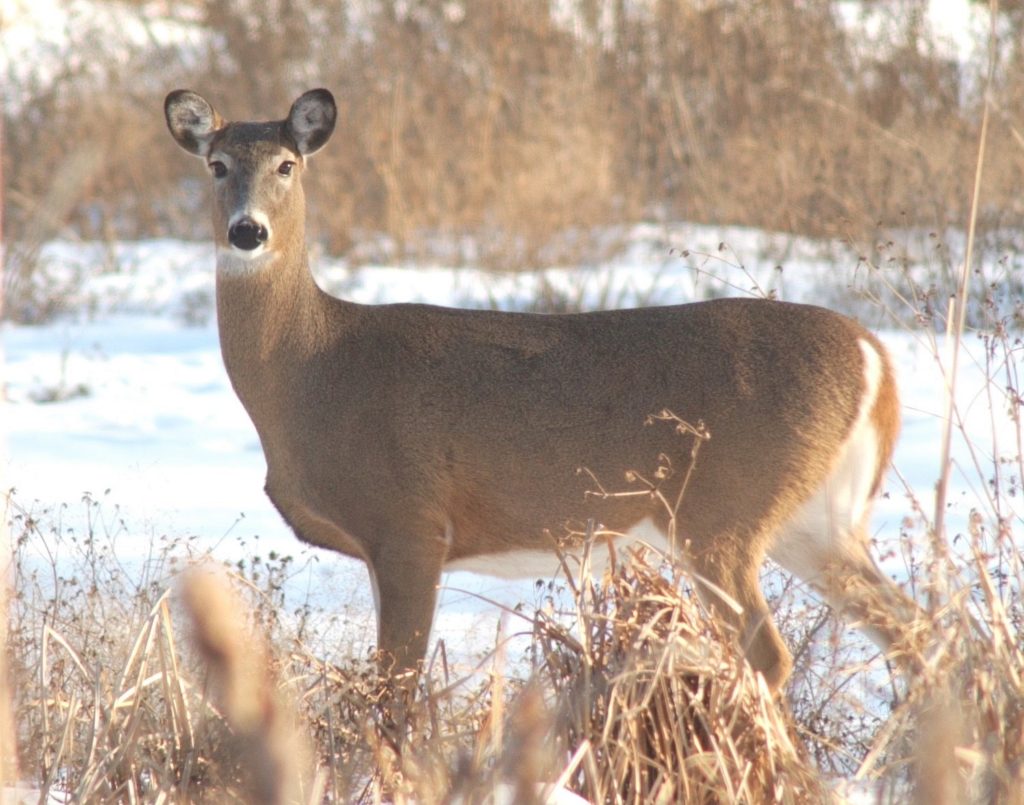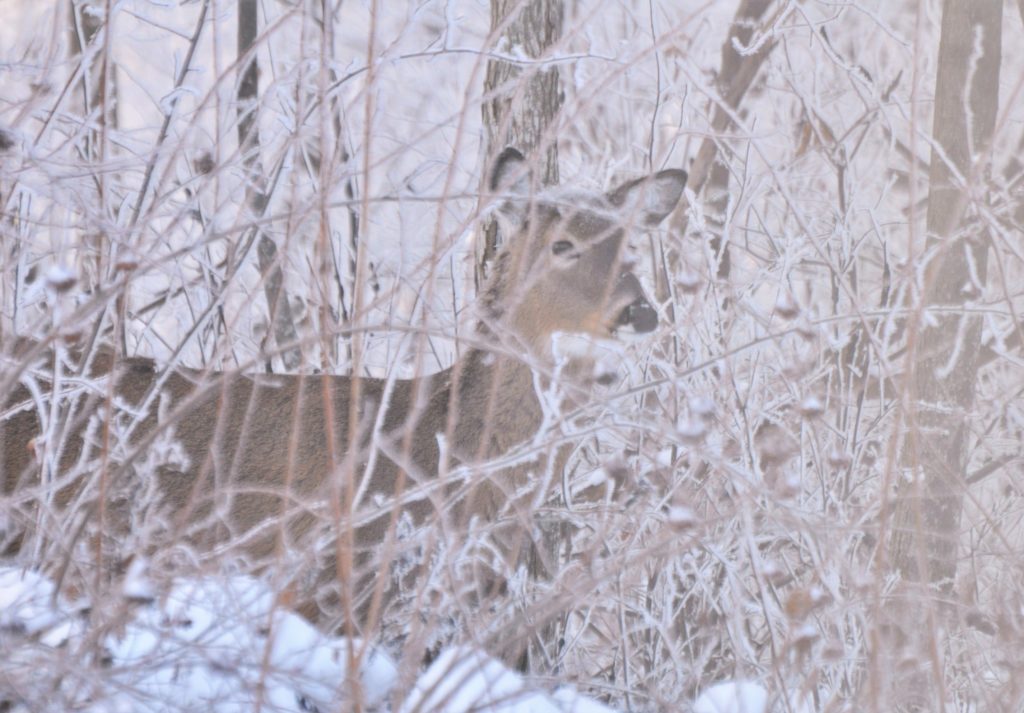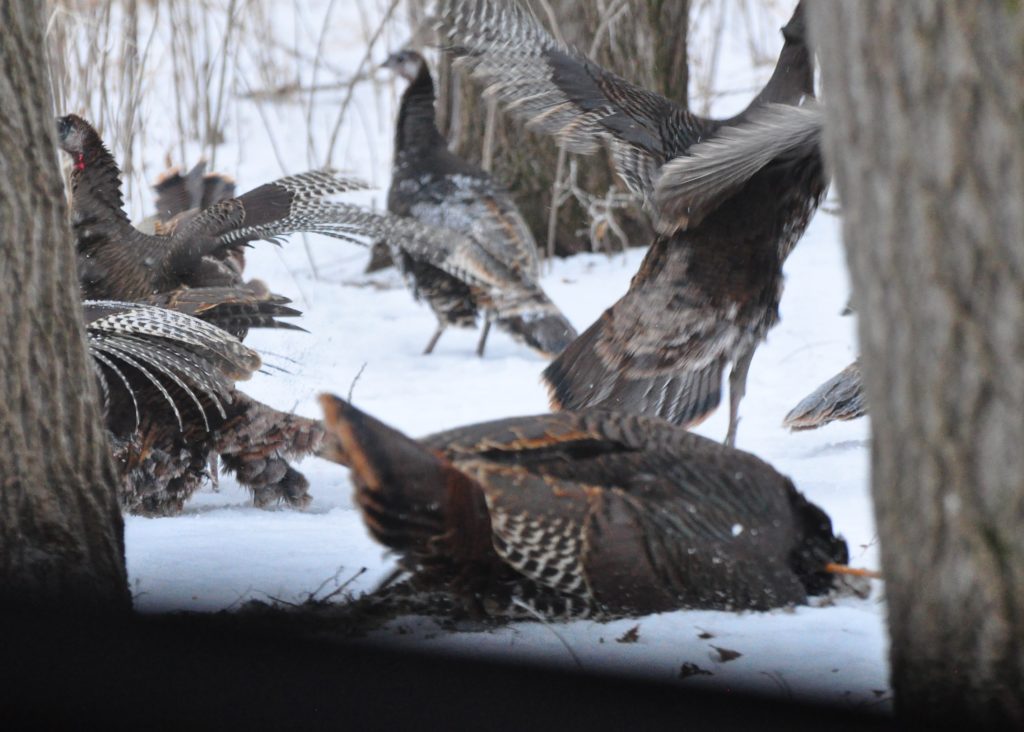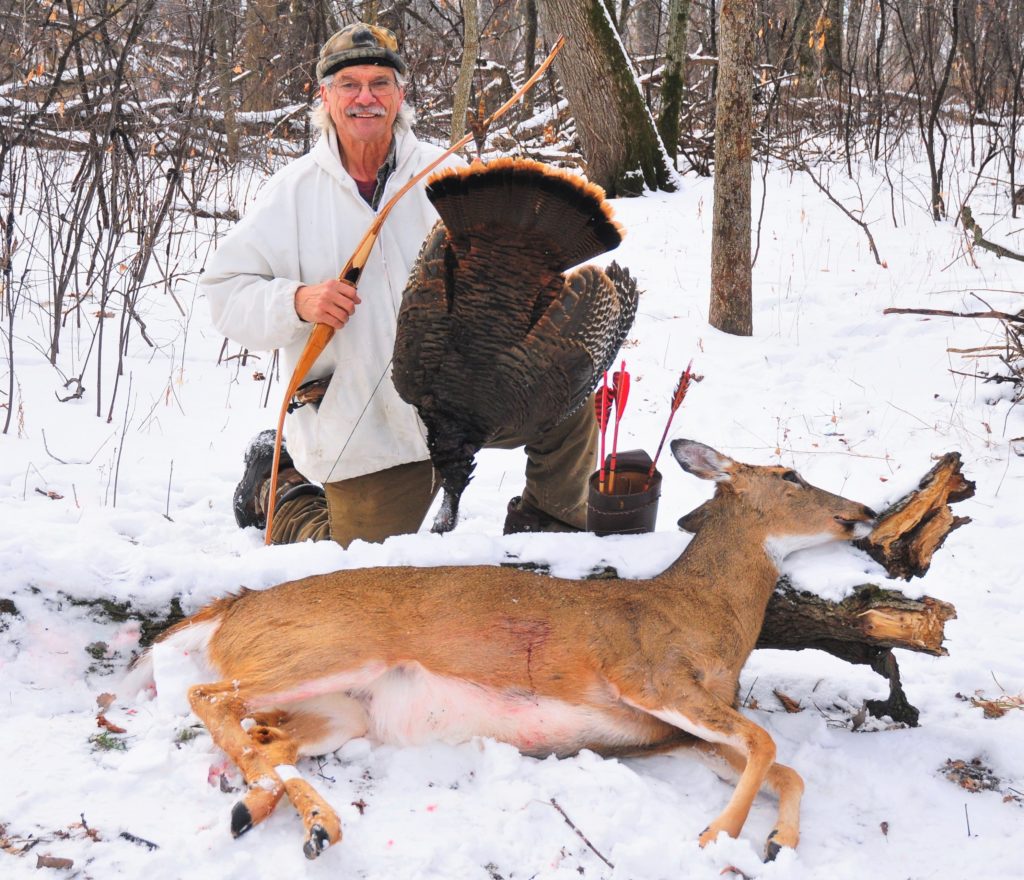Photography courtesy of Lowell Washburn, all rights reserved.
The final segment of Iowa’s deer and turkey seasons is one of my favorite times to enjoy the Iowa outdoors. OK, I know the obvious down sides. By now, groups of already suspicious turkeys have assembled into large wintering flocks. And following the conclusion of five separate firearms seasons, it’s no wonder that local white-tail populations are more than a little bit jumpy.

But there are also some positives that combine to make getting out worthwhile. During most years, the landscape will have become a snow-covered winter wonderland of postcard perfection. The air is crisp and clean; and you’ll never have to worry about swatting mosquitoes during a January hunt. Since most people don’t like sitting in the cold, competition from other hunters is virtually nonexistent.
Best of all — you don’t necessarily need to bag game in order to enjoy a successful winter hunt. The chance to observe a variety of native wildlife species — cottontails, squirrels, red and gray fox, an occasional coyote, and a wide array of wintering birdlife — is more than enough to make for a good time. Close encounters with deer or turkeys are always welcome, of course. And on those days when I do actually manage to bring home game, I simply regard the event as icing on the cake. Those events are painfully rare, however. At the conclusion of most late season hunts, I return home with clean arrows and unused tags. Fortunately, there are some happy exceptions, and this year has been one of them.
Like all deer hunters, I like shooting big bucks. But big deer are always hard to come by and when hunting during late season, I am far more interested in obtaining fresh venison than I am in collecting antlers. Consequently, I didn’t hesitate when presented with the opportunity to bag a young buck on the afternoon of my third hunt. The date was December 31st. It was a good way to end the year.

Switching to turkeys, I failed to see or hear a single bird during the next two outings. But the cover was laced with turkey tracks and on the second morning, I decided to do some poking around. Paralleling a prominent ridgeline, I was surprised to find a group of around 25 birds still on the roost at 10:30. With high humidity, light fog, and late morning temps remaining in the single digits, I guess the turkeys had decided that it would be a good day to sleep in. Wish I’d have been included in the memo.
Hoping to fill a second deer tag, I went back to hunting white-tails where I soon passed on a big buck that had approached to around eight paces. Although the deer was large in body, it was also without antlers – the first shed buck I have seen this winter. Even when I need the venison, I always pass on shed bucks if I see them. Hard to explain, but it just seems somehow ‘disrespectful’ to harvest a mature buck in a diminished [antlerless] condition. Sounds crazy, I know. Totally lacking in any scientific or biological justification, it’s just what I prefer.
Minutes later, a group of six white-tails came wandering down the trail and I was able to obtain a shot at what appeared to be the heaviest doe. I was shooting a 50# Lonesome Wind longbow. Beautifully crafted by Freemont, Nebraska’s Vince Smith and gifted to me by traditional archery enthusiast, Dave Thomas, the bow has a smooth draw and speeds an arrow to “where you’re looking.” On this shot, the arrow made a complete pass through and the doe hit the snow in short order.
Deciding to try for turkeys again, I moved to another area where I quickly popped up a ground blind and placed some decoys out front. This time, I had barely gotten seated when – what to my wondering eyes should appear – but a flock of wild turkeys slowly making its way through the snowy vegetation.
Although somewhat leery of my calling, the birds had soon approached to within a few paces of my decoys. The flock contained around a dozen or so birds – all hens except for a single jake. Both sexes are legal game during fall and winter turkey seasons and, selecting one of the closer hens, I let the arrow fly. The broadhead struck home, the hen collapsed, and the flock exploded into the air.

As previously noted, most of my late season hunts do not end in this manner. But today was different. With a fat doe on the ground and a fresh turkey to pluck, there would be some fine dining in the weeks ahead.

“Wow. I must be dreaming,” I thought to myself. It was a good way to begin the year.

 Tom Cope
Tom Cope Sue Wilkinson
Sue Wilkinson Susan Judkins Josten
Susan Judkins Josten Rudi Roeslein
Rudi Roeslein Elyssa McFarland
Elyssa McFarland Mark Langgin
Mark Langgin Adam Janke
Adam Janke Joe Henry
Joe Henry Kristin Ashenbrenner
Kristin Ashenbrenner Joe Wilkinson
Joe Wilkinson Dr. Tammy Mildenstein
Dr. Tammy Mildenstein Sean McMahon
Sean McMahon